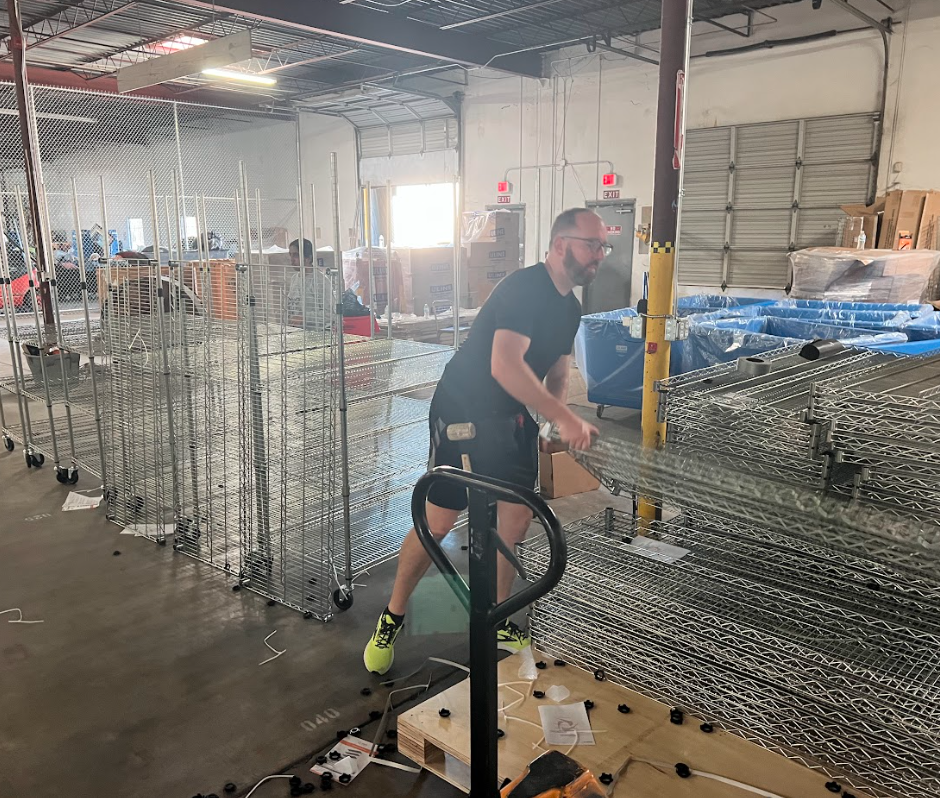There’s no question that the secondhand and thrift e-commerce industry is always changing. New products and unique SKUs continuously flow in and out of your warehouse. That’s why efficient inventory management must be at the heart of your operation. Whether you’re a small thrift store looking to scale your online presence or a large secondhand e-commerce operation, mastering inventory storage and audit processes can be the difference between sustainable growth and stagnation.
Why Inventory Mastery Matters
For secondhand e-commerce businesses, inventory is not just a collection of products; it’s the lifeblood of the operation. Without a well-organized inventory, even the best marketing strategies and e-commerce platforms can’t reach their full potential. An optimized inventory system ensures that products are easy to find, list, and ship, thereby increasing efficiency, reducing errors, and enhancing customer satisfaction.
We break down the complexities of inventory management into three main areas:
- Optimization
- Audits
- Tailored Management Practices
Let’s explore these in detail.
Optimizing Your Inventory: The Foundation of Success
Standardization is Key
Standardizing your storage units is one of the first steps in optimizing your inventory. Using standardized units not only gives your warehouse a professional look, but also enhances operational efficiency. We suggest using units like the Trinity shelving systems. These units, particularly when equipped with wheels, allow for flexibility as your business grows, enabling easy reconfiguration of your storage space without the need for a complete overhaul. Just unlock the wheels, adjust your floor layout to accommodate your workflow, and lock the wheels back in place.
Efficient Location Sequencing
Location sequencing is another critical component of inventory optimization. By clearly labeling units, shelves, and bins, you can significantly reduce the time employees spend searching for items. For instance, using a numbering system rather than letters makes it easier for staff to locate items quickly, as numbers are more intuitive and easier to follow.

Clear Labeling and Barcode Systems
A robust labeling and barcode system further streamlines the process. By using a clear and consistent labeling system that includes the unit, shelf, and bin (e.g., Unit 10, Shelf 3, Bin A), you reduce the search space for each item to a fraction of the storage unit. This precision not only speeds up picking times but also minimizes errors, leading to faster order fulfillment and happier customers.
Best Practices for Audits: Ensuring Accuracy and Efficiency

The Importance of Regular Audits
Regular audits are crucial for maintaining the accuracy of your inventory. These audits help ensure that what is listed in your software matches the physical inventory, reducing the chances of overselling or misplacing items. Audits also empower your e-commerce leadership by providing them with accurate data to make informed decisions.
Creating an E-Commerce Inventory Check-list
Implementing a daily inventory check-list is vital for maintaining a well-organized and efficient e-commerce operation. This check-list ensures that all inventory management tasks are systematically addressed, reducing the risk of errors and keeping your operations running smoothly.
Daily tasks can include shelving newly listed items and conducting rotating audits of inventory units to maintain accuracy and prevent backlogs.
By following this structured check-list, your team can maintain high levels of accuracy and efficiency, which are crucial for the success of any secondhand e-commerce operation. This approach not only optimizes your inventory management but also empowers your leadership with the data needed to make informed decisions, driving growth and sustainability.

The Role of Purging in Inventory Management
Purging dead inventory—items that have been listed, but are not selling—is a critical part of the audit process. These items take up valuable space and do not contribute to your bottom line. By regularly purging these items, you free up space for new inventory that has a higher chance of selling, thereby increasing your revenue potential.
Tailored Management Practices: Adapting to Your Team’s Needs
Cross-Training for Smaller Teams
For smaller to mid-sized teams, cross-training is essential. By ensuring that all team members are familiar with inventory management processes, you can maintain operational efficiency even when staffing levels fluctuate. Assigning a dedicated inventory manager or dividing tasks among team members can help maintain consistency and accuracy.
Specialization for Larger Teams
As your team grows, specialization becomes more feasible and beneficial. By assigning specific tasks such as shelving and purging to dedicated employees, you can increase efficiency and ensure that these critical tasks are completed regularly. This approach not only improves workflow but also allows your team to focus on their strengths, further enhancing productivity.
Adapting to Your Space and Growth
Finally, it’s essential to regularly assess your space and growth needs. If your inventory is overflowing or employees are constantly bumping into each other, it might be time to consider expanding your storage space. This not only provides room for growth but also creates a more organized and efficient working environment.
When your floor plan or warehouse space just isn’t working anymore, consider utilizing an outside resource. An outside team and perspective can fully assess your business’ needs. This will address workflows and processes to be fully optimized within the space you operate.

Watch the Full Master Class on Inventory Mastery
The strategies and insights shared here are just the tip of the iceberg. For a comprehensive understanding of how to optimize your inventory, streamline audits, and tailor management practices to your specific needs, we highly recommend watching the full 24-minute E-Commerce Master Class session on the topic of Inventory Mastery: Streamline Your Storage and Audit Processes. You’ll gain even more actionable insights that can transform your secondhand e-commerce operation into a well-oiled machine, driving revenue growth and operational efficiency.








